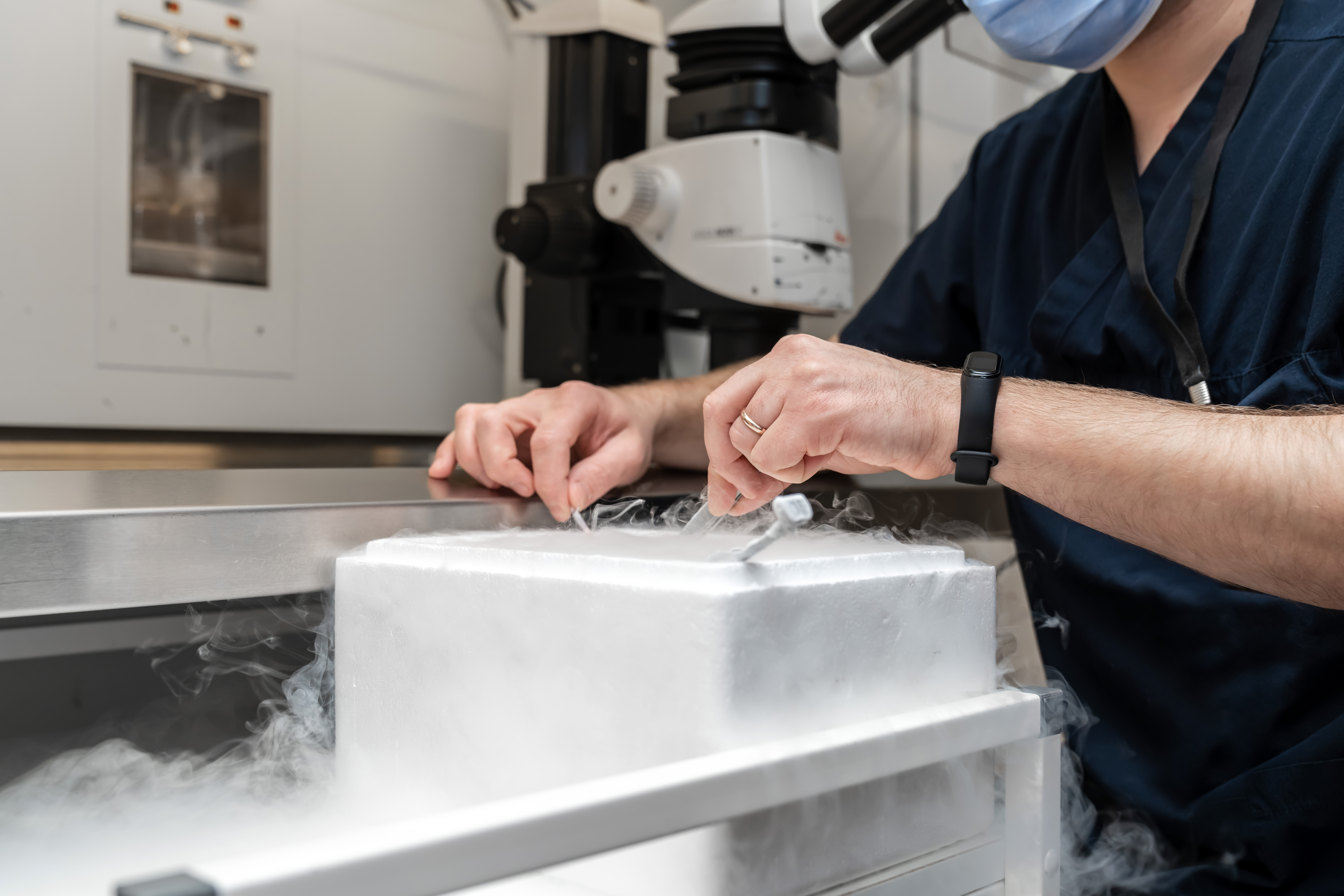My husband and I were married in April of 2015. We celebrated our five-year anniversary with a delicious dinner—a Whole30 take on the burrito bowl. It wasn’t an accident. The Whole30, a 30-day lifestyle change encouraging the consumption of whole foods while restricting sugar, milk, grains, alcohol, and other foods, has played an integral part in our relationship. With the help of Whole30, I was able to manage my PCOS symptoms, which in turn helped us overcome infertility.
Our relationship with Whole30 eating began after we conceived our first child. Sadly, this pregnancy ended in miscarriage, as did the following. At that time, I had been avoiding wheat products, but that approach had not been as effective for my overall health as I had hoped. I was diagnosed with Polycystic Ovarian Syndrome (PCOS) and low thyroid function and since then, my life has been a series of suffering, hope, joy, struggle, and lifestyle changes.
As PCOS goes, there is no “one-size-fits-all” approach to relieve symptoms, or to find the root cause of the disease in each woman. However, research shows that insulin resistance is a main contributor to PCOS and the overproduction of testosterone within the body. This factor was what made my husband and I take the plunge into our first Whole30, in the hopes that Whole30 would help me manage my PCOS and overcome infertility. I thought that if I could give my body a break from the inflammation and insulin overload, I might just ovulate on my own and conceive.
It was June of 2017 and my husband had a job at a college with housing and a meal plan included, but we were discovering that we had different dietary needs. At that point in our marriage, I was not very talented in the kitchen and I was even worse at meal planning—a must for a lifestyle change such as the Whole30.
But I have come to realize that even a complex nutritional regime like Whole30 can be learned. And, for me and my family, it’s been more than worth the trouble to learn.
What is Whole30?
If this is your first exposure to the Whole30 here’s the program breakdown.
For 30 days straight (with no straying from the plan) you can eat as many veggies, fruits, nuts and seeds, fish and seafood, meat, eggs, and healthy fats as your body needs to thrive. You avoid all grains, dairy products, legumes, alcohol, food additives (the ingredients you can’t pronounce) and sugar in all its various forms. When the 30 days are finished, you slowly reintroduce each of the eliminated food groups and you observe the impact they make on your body.
The difference Whole30 made for my health and fertility
By the end of our 30 days, not only did I feel better on the inside, but I also looked healthier on the outside. My rings fit more loosely on my fingers, an indicator that inflammation and water retention had decreased. My clothing also fit better and I felt more comfortable with myself. There was a glow to my skin (rosy cheeks) and my moods were more stable. I was sleeping better and my sugar cravings were the most tame they had ever been. I felt so refreshed and so hopeful that I was on the right track. Six days later, we conceived our son, Samuel. He was born full-term (on his due date!), healthy, and with no complications.
How fertility awareness works hand-in-hand with Whole30
I cannot emphasize enough how pivotal it was for me that while doing Whole30, I was charting my cycle using a Fertility Awareness-Based Method (FABM). The method I learned was the Creighton Model FertilityCare System. Because of charting with the Creighton Model, not only do I know the date we conceived our son, but I now have nearly a decade of my own recorded medical history—in one place!
When it comes to managing PCOS, being able to see your cycles laid out in a visual way is arguably the most important part of the puzzle. Without this half of the puzzle, the other half of PCOS management (lifestyle changes, medical intervention, etc.) may never come fully into focus; the picture may be left incomplete. As confusing as PCOS management can feel, I take much relief in knowing I’m doing all I can to “see” what my body is doing each cycle. I’ve been using the Creighton Model for almost a decade, and am so convicted of its importance in my life that I am now trained to teach other women the system as well.
Managing my PCOS with Whole30
Fast forward to pre-quarantine 2020: my husband and I had just completed our second Whole30. This time around, my sugar cravings were literally out of control. We are hoping to dupe the PCOS with the Whole30 lifestyle change once again and conceive a child, and I firmly believe it can be done. I am continuing to dive more deeply into eating for optimal health and PCOS symptom reversal—and it is hard. I’ve had to lean on my husband and his discipline and strength many times. I continue to learn more about the vow I made to him, “to be there in sickness and in health”… I never thought I would be viewing this vow through the lens of my own chronic illness.
I am continually learning more about PCOS and endocrine health and I will forever vouch for a dietary elimination program like Whole30 as a great first step for those struggling with PCOS symptoms and not knowing where to begin. Again, there is no one-size-fits-all approach to PCOS treatment, so it is always important to discuss these lifestyle decisions with your healthcare provider before diving in right away. The journey to optimal health doesn’t end with a diet and nutrition approach like Whole30, but it can absolutely begin with one.
Mindful eating and mindful charting
It’s also important to be mindful that while PCOS (and other reproductive disorders) can be very difficult to manage at times—especially if you are facing a sugar addiction—it does not have to consume your every thought. Learning thoughtful eating habits and becoming more in tune with my body—both of which can become second nature after a while—may be one of the most treasured fruits from my Whole30 experience. Mindfulness with charting and eating can truly go hand-in-hand to help you improve your overall health.
Prioritizing our health and fertility starts with the food we eat
Since this journey began for us, we have strengthened our resolve to feed our family nourishing, satisfying foods and to cut out sugar wherever we can. And it is definitely possible to do all of this on a budget! My husband is a Catholic high school teacher and I stay home with our son. Our budget is thrifty at best, but we strive to keep insulin-friendly meals a priority, because we want our food to be our medicine and our medicine to be our food. This process has helped me realize that I am in control of what I give my body, not the other way around. There’s also been an added bonus: I’m now a self-taught, savvy meal planner!
While the Whole30 helped me manage my PCOS and overcome sub-fertility to grow our family, it has also helped us reach a place of freedom and surrender with both our health and our shared fertility. To use a plant analogy, we recognize that we must keep the soil nutrient-rich, but the seed is planted and sprouts in its own time.
It’s necessary to keep this perspective to keep from being discouraged. I keep reminding myself each morning, “This is the first day of the rest of your life”—it’s been a motivating anthem as I wade through all that accompanies chronic illness. Dive in, dig deep, exercise joy and gratitude for the small victories, and see what comes of your health journey. You have nothing to lose.
Interested in learning more about PCOS, infertility, and using nutrition to improve your fertility? Check out some of our other articles, below:
Natural options for managing PCOS
3 Simple Nutrition Tips that Will Improve Your Reproductive Health
Tips to Improve Hormone Health Right Now
Commonly Asked Questions About Infertility: A Natural Womanhood Infertility FAQ







